Sonic and All-Stars Racing Transformed Preview: The Saviour of Arcade Racers
Can PGR talent and Sega's mascot breathe life into a fading genre?
When I last met Gareth Wilson three years ago, we were sat in the offices of his previous employer, Bizarre Creations. The designer, a veteran of the Project Gotham Racing series, was talking up his next game Blur, telling me how Bizarre wanted to escape the simulation niche and make racing games mass-market again. "I think we should be going back to the reason people play racing games," he said.
It didn't work out that way. Blur was a good game but it didn't find its audience, and a year and a half after we met, Activision shut down one of Britain's best studios for good. But the story - for Wilson, at least - might still have a happy ending. He might yet hit that populist racing jackpot. And he might do it with Sonic the Hedgehog.
This time around, Wilson and I meet in the plush screening room of a London hotel. Wilson now works for Sheffield's Sumo Digital, an unpretentious jack-of-all-trades studio with good racing game pedigree and a good relationship with publisher Sega (both exemplified in its wonderful console versions of Sega-AM2's modern classic, OutRun 2). He's the design director on the freshly announced Sonic & All-Stars Racing Transformed, a sequel to 2010's mascot racer, Sonic & Sega All-Stars Racing.
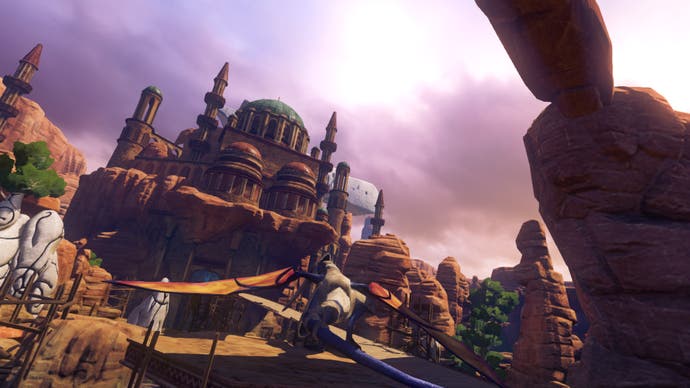
That game, also by Sumo, has the currently rare distinction of being an actual hit racing game that doesn't say "Mario Kart", "Gran Turismo" or "Need for Speed" on the box. It did what Blur couldn't, what so few in this genre have managed to do in the last couple of years: it sold.
So Sega and Sumo are returning to the concept with renewed vigour - and with a headline twist. Sonic and an assortment of pals from Sega's eclectic (not to say eccentric) roll-call of gaming stars will take to the sky and the waves, as well as the track, in vehicles that transform in smooth, detailed animations - from car, to boat, to plane and back again.
"It's such a good hook," says Wilson, recounting how the young kids Sumo ropes in for play-testing, who haven't been told anything about the game, squeal with delight when they see their first transformation. "If you show it to an eight-year-old, they don't want the game. They need the game."
Of course, it's a fine line between a hook and a gimmick - especially in the world of mascot racing, where tradition holds that uninspiring low-budget cash-ins must fight for scraps in the shadow of the mighty Mario Kart, now two decades long. But Sega's had a taste of success in this area now, and it's deadly serious when it gives Transformed the much-abused "triple-A" label. A rep tells me that it's being treated as "this year's big Sonic title", and Wilson confirms that Sumo's not knocking this one out on the cheap.

"This is a massive, massive budget title," he says, citing the expense of modelling three separate vehicles for each of 27 characters, as well as the transformations between them. Sega's investment also encompasses new rendering and physics engines (created "with future platforms in mind," says Wilson - but no, he can't confirm or deny a Wii U release) and has allowed Sumo to take in some of the development talent from Bizarre and Black Rock, which similarly found itself shut down after the release of Split/Second. The budget's also visible in the lavishly mounted dynamic tracks that, just like the vehicles, transform from lap to lap.
Wilson fizzes with excitement about these colourful racing romps. He says that building them has been a challenge on a different scale to carving racetracks out of real-world locations as he did on Gotham and Blur; it's more akin to designing a level for an action-adventure. We get to sample two, one themed around Super Monkey Ball, the other based on the fan-favourite fantasy shoot-'em-up, Panzer Dragoon.
The Monkey Ball track is a helter-skelter descent down candy-coloured chequered ribbons which split and twist before plunging into a water slide. I'm playing as Amigo, the psychotically happy star of seminal Dreamcast marac-'em-up Samba de Amigo; his jalopy becomes a little paddle steamer, tossed into the air by waves created by giant Monkey Balls hitting the water. I exploit the air I catch by doing a barrel roll for an extra speed boost, make sure I follow the flow the right way around a whirlpool, and when I get to the bottom I go back to the top of the slide (though Paul McCartney probably didn't envisage doing it by warp gate).
The Panzer Dragoon track follows a dusty canyon above river rapids, firstly on land, where navigating the snaking bends requires mastery of the hold-button-to-drift handling style (not dissimilar to Ridge Racer Unbounded's fun button). Transformed's speed classes, which will range from easy C to testing All-Star, aren't in the game yet, but the demo is pitched around A-class and at this level it's already a thrill to link together the OutRun-style endless drifts. "All-Star is something that I would play quite seriously, kind of like platinums in PGR," Wilson adds.
On lap two, a crumbling track deposits me in the roiling wet stuff and a surprisingly full-on simulation of speedboat racing. Those impressive-looking real-time waves aren't just for show. "The two inspirations for it were WaveRace and Hydro Thunder," Wilson says. "At first we dumbed it down a lot, but it got to a point where it just felt like you were driving on a wobbly road. We're spending all this time and money on making waves and flight models and stuff, and really, it was all feeling the same... But then as we played more and more we thought, you know what, we can push this a little bit further and make it a little bit more interesting."
On lap three we're catapulted into the air; the physical side is a little less pronounced here, but Sumo is still working to give the controls more heft than you might expect. Climbing slows you, diving speeds you up and zip gates and power-ups define the best racing line during these open sections.
This time, I'm Vyse from Skies of Arcadia, a new addition to the All-Stars line-up, driving a fantastical steampunk machine. The other confirmed newbie is Golden Axe's Gilius Thunderhead. Just like the first game, you're as likely to see Beat from Jet Set Radio or Virtua Fighter's Akira as Knuckles or Tails. Sega's open-door approach to the roster of playable characters allows Sonic & All-Stars Racing to broaden its appeal as far as it will go: "It's a family game as well as being a racing game, it's a retro enthusiast's game, it appeals to a bit more of a broader base than maybe something like Split/Second and Blur did," says Wilson.
These 27 characters will be unlocked in a new single-player adventure mode which is "inspired by games like Mario Galaxy," he says. "There's a feeling of starting at one place and unlocking characters, rescuing them as you progress through the game and different game modes... I thought the original game was a fantastic driving experience but maybe lacked a little bit in meta-game type stuff - progression and things like that."
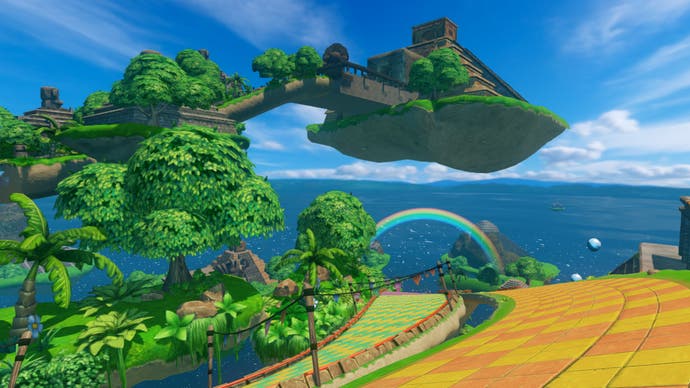
Progression doesn't stop there, as each character can be levelled up through five ranks. Filling up the All-Star gauge with on-track moves earns you XP as well as granting access to your character's All-Star power; each level unlocks stickers and achievements as well as perk-style vehicle mods which can be equipped to alter the handling characteristics of your favourite characters. There's no difference between these in the demo build, but Wilson intends them to be pronounced - "I want to tune the stats quite hard, actually, [so] there's some genuine differences to them," he says.
Weapon pick-ups form the final piece of Transformed's puzzle, and here Wilson faces a challenge he faced before with Blur: how to replicate the Mario Kart tools "you have to have" while making them feel as original as possible. "Every opportunity we're trying to not do a Mario Kart weapon... we're trying to do something unique and interesting," he says, dismissing the placeholder examples in the demo. The homing missile will be a tiny radio-controlled Sonic car carrying a stick of dynamite (complete with transformations); the shield a catcher's mitt that tosses incoming weapons into your own stash. The mechanics sound familiar but the details raise a smile: "They're kind of ACME, Looney Tunes inspired."
But the great thing about Sonic & All-Stars Racing is that you don't really need to justify its existence alongside Mario Kart. The difference between them is as easy to grasp as the difference between Mario and Sonic themselves - one cute, slapstick and inventive, the other with a harder, brasher, more spectacular arcade edge.
So it's fitting and welcome that Wilson and other refugees from the great arcade racing slump have found themselves working on Transformed. Here, they can subtly slip their race-tuned sensibilities into a game with good commercial prospects and genuine crossover appeal. And if it works out as it should, everyone wins - from kids, to Sega fanboys, to the dispossessed brotherhood of the drift.
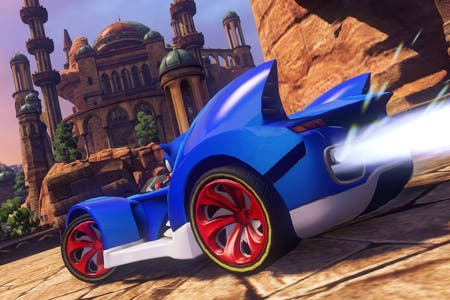

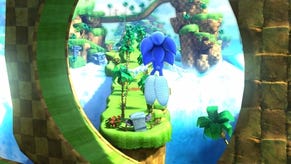
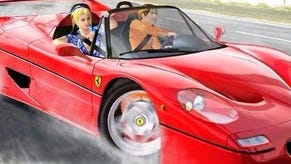
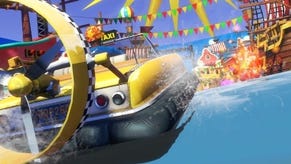
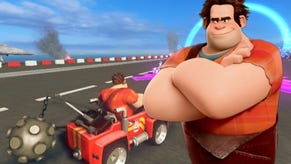

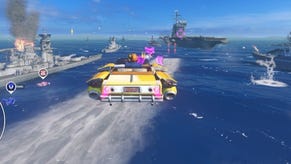
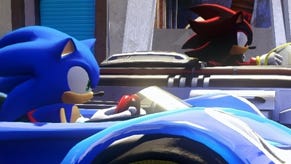


.png?width=291&height=164&fit=crop&quality=80&format=jpg&auto=webp)




.jpg?width=291&height=164&fit=crop&quality=80&format=jpg&auto=webp)
